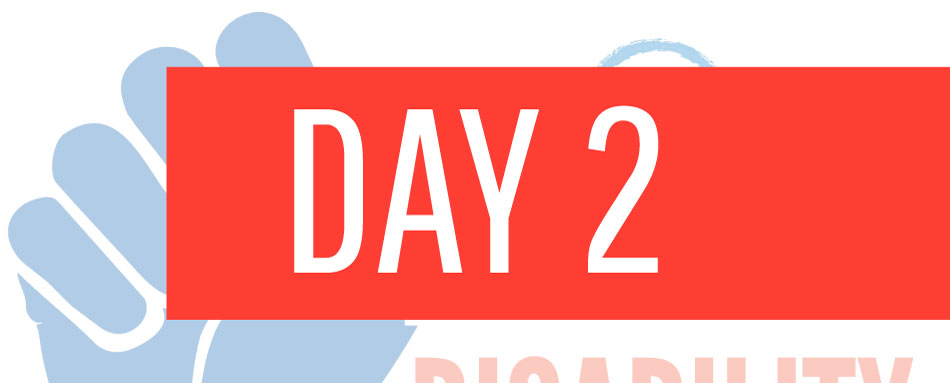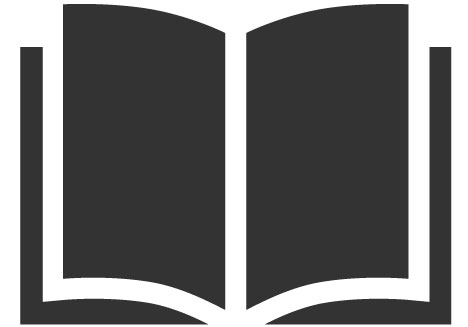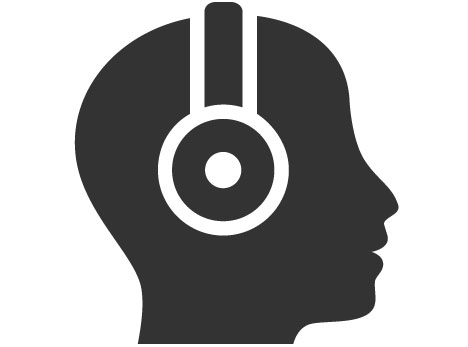
The language we use around any topic has meaning. We can easily project whether we value something or see it as inferior with the words we choose. Unfortunately, much of the language used around disability stigmatizes it as being a negative thing—something that is “sad” or “bad,” that must be “overcome,” or with which someone is “afflicted.” Anything discussed in these terms would be perceived as undesirable.
But, we do not have to talk about disability this way. What if, instead, we think of disability as a natural part of the human condition—just one more characteristic someone might have, like having freckles or being left-handed? Then the language around disability would be neutral and without judgement.
The word “disability” is the preferred term within the disability community, as reflected in phrases like the “Americans with Disabilities Act,” “Disability History,” and “Disability Pride.” Avoid outdated and patronizing terms such as “handicapped,” “differently abled,” and “special needs.” Disability is the correct and respectful choice. Therefore, it’s best to use “disability” without altering its spelling or formatting, such as “disABILITY.” Also, “disabled” is an adjective to describe disabled people, not a noun to be left on its own. So, instead of “the disabled,” we should say, “the disabled community,” “disabled people,” or “I am disabled.”
Many of the words used around disability have developed negative connotations or come from an insulting view of disabled people. Words like “crippled,” “idiot,” “psycho,” “dumb,” and “retarded” are considered offensive and should be avoided. Disabled people might use some of these terms to reclaim power from those who have labeled them with prejudice. If you are not disabled and have not experienced prejudice from such labels, these words are not acceptable for you to use.
When talking to or about a person with a disability, frame the conversation in the most neutral terms possible. Consider these two sentences: “Bob can’t walk,” vs. “Bob uses a wheelchair.” Which of these sounds more neutral? Don’t ask someone, “What’s wrong with you?” Instead ask, “What is your disability?” because there is nothing “wrong” with the person.
Consider too, some common expressions are ableist and negatively refer to disability, even when people do not intend to talk directly about disability . . . “Oh, that’s really lame!” . . . “They’re idiots.” . . . “That movie was so retarded.” . . . “What are you, deaf?” . . . “You’re crazy.” . . . “Stop acting psycho!” Using words associated with disability as slurs and insults contributes to the stigma around disability and can be very hurtful to people with disabilities.
When talking about people with disabilities there are two approaches: “person-first” and “identity-first” language. The person-first approach puts the person before the disability (“I am a boy with dyslexia.”) whereas identity-first puts the disability first (“I am a dyslexic boy.”). Neither is wrong and both are used within the disability community. Some people with disabilities prefer to be seen as a person first, no different than anyone else (hence the term “person-first”); while others identify strongly with their disability and want that identity recognized with identity-first language. The best way to know which language a person prefers is to ask them or to listen to how they refer to themselves.
![[Image description: An illustration titled “Person-First vs. Identity-First,” referring to different ways of using respectful disability language. On the left is a person holding a rainbow-colored bag, labeled “person with autism.” On the right is a person with a rainbow-colored head, labeled “Autistic person.” Disability Network Southwest Michigan blue and orange logo in upper left corner of the image.
Attribution: Disability Network Southwest Michigan (2024).]](https://unitedforscmi.org/wp-content/uploads/2022/08/dec21.jpg)
[Image description: An illustration titled “Person-First vs. Identity-First,” referring to different ways of using respectful disability language. On the left is a person holding a rainbow-colored bag, labeled “person with autism.” On the right is a person with a rainbow-colored head, labeled “Autistic person.” Disability Network Southwest Michigan blue and orange logo in upper left corner of the image. Attribution: Disability Network Southwest Michigan (2024).]

Read
- ADA National Network – Guidelines for Writing About People With Disabilities
- National Center on Disability and Journalism – Disability Language Style Guide
- Andrew Pulrang, Forbes – Here Are Some Dos and Don’ts of Disability Language
- Lydia X.Z. Brown, Autistic Self Advocacy Network – Identity-First Language

Watch
- Social Work Technical Writer – Ableism & Language (5:22, includes captions and transcript)
- Annie Elainey – Disabled Person or Person With a Disability? (7:03, includes captions and transcript)
- Conversations with Ivanova – Conversations with Ivanova: People First and Identity First Language (3:08, includes captions and transcript)
- Branching Out Support Services – Autistic Identity First vs. Person First Language (4:36, includes captions and transcript)

Listen
Down to the Struts Podcast – Episode 2: The Language of Disability with Dr. Sara Acevedo (36:17, transcript here)
Discussion
- What was your reaction to the statement, “Disability is a natural part of the human condition?”
- Think about how you talk about people with disabilities. Do you use neutral language? Why or why not?
- List three ways people can start talking about disability in a neutral way.
